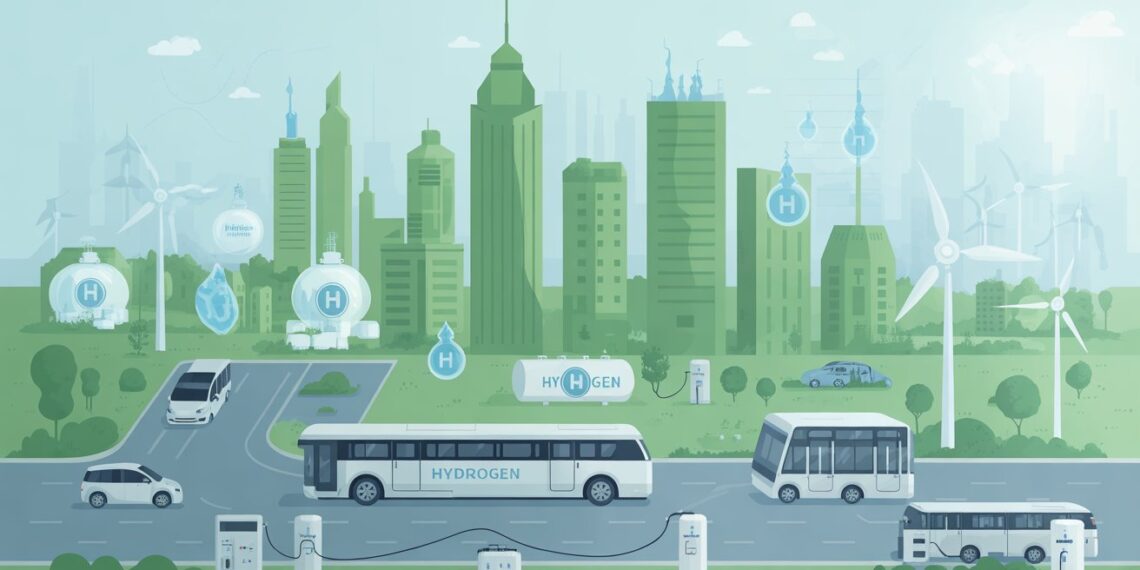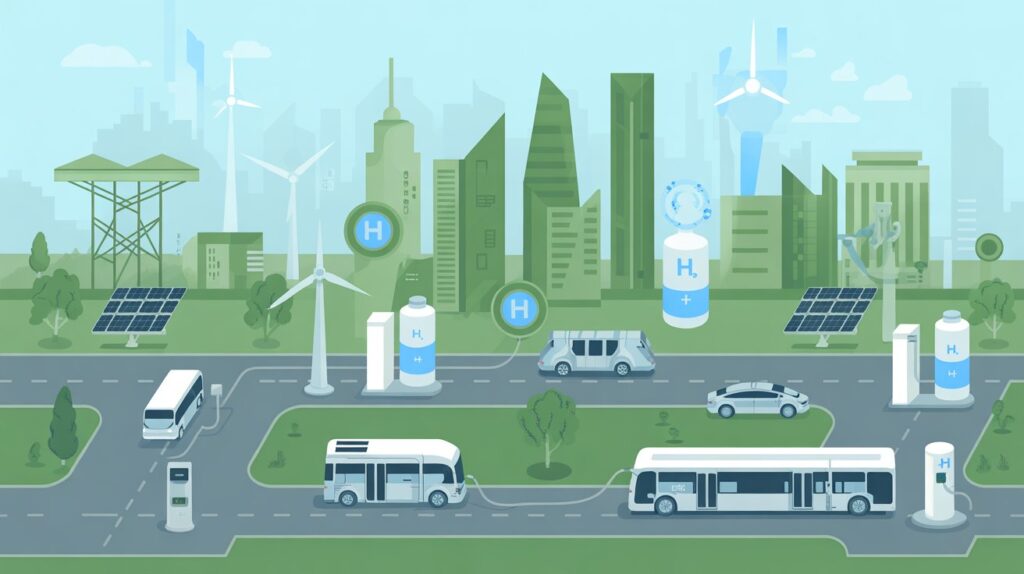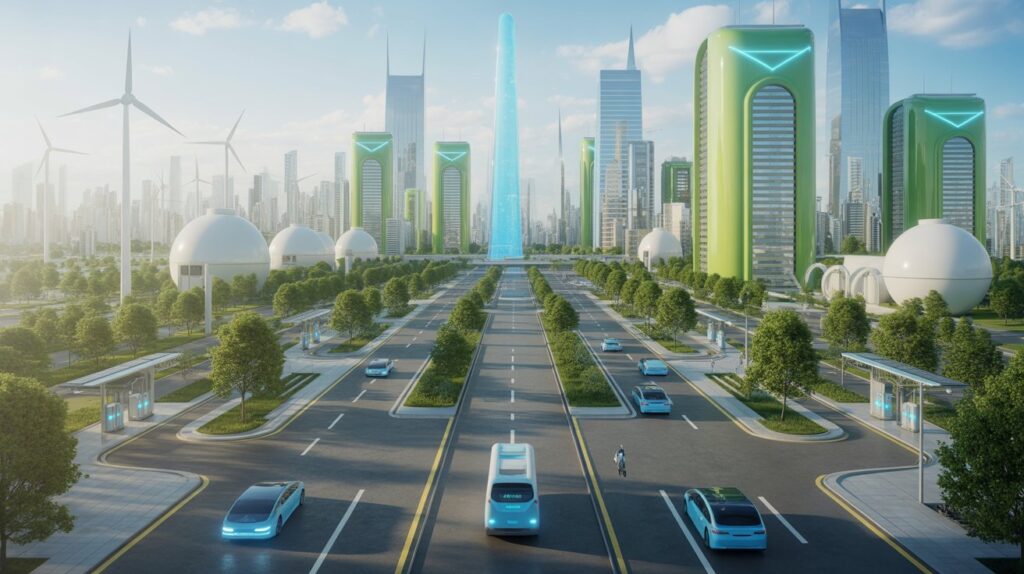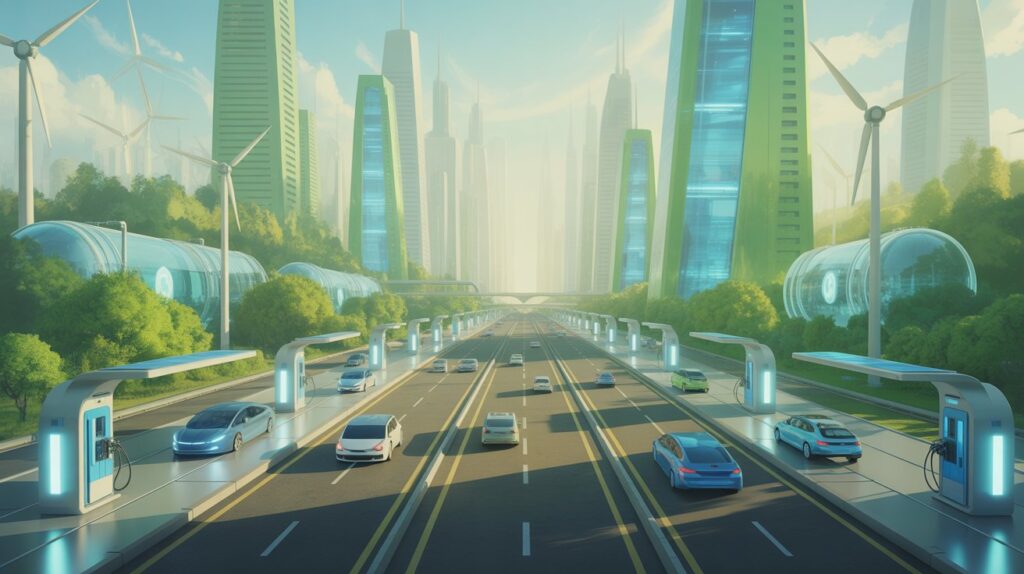The global energy landscape is undergoing one of the most significant transformations in human history. With the dual pressures of climate change and rising energy demand, governments, industries, and researchers are racing to develop sustainable, scalable, and reliable solutions. Among these, hydrogen fuel cells have emerged as a key contender. Unlike conventional fossil fuels, which release greenhouse gases and harmful pollutants, hydrogen fuel cells produce electricity by combining hydrogen and oxygen, leaving only water and heat as byproducts. This makes them not only clean but also versatile, with potential applications across transportation, industry, and residential power.
While challenges such as cost, infrastructure, and safety persist, the promise of this technology is substantial. This article takes a comprehensive look at hydrogen fuel cells—their history, current applications, advantages, challenges, and, most importantly, the future of hydrogen fuel cells in shaping a low-carbon world.
Understanding Hydrogen Fuel Cells
What Are Hydrogen Fuel Cells?
Hydrogen fuel cells are electrochemical devices designed to produce electricity from hydrogen gas and oxygen. Unlike combustion engines, which burn fuel to generate energy, fuel cells operate silently and with higher efficiency, relying on chemical reactions. Their only direct byproduct is water vapor, making them one of the cleanest energy conversion technologies available.
How They Work: The Science Behind the Technology
The process begins when hydrogen molecules are fed into the anode of a fuel cell. Inside the cell:
- Step 1: Separation: Hydrogen atoms split into protons and electrons.
- Step 2: Current Generation: Electrons travel through an external circuit, generating electricity.
- Step 3: Water Formation: Protons pass through an electrolyte membrane to the cathode, where they recombine with oxygen and electrons, forming water.
The overall efficiency of hydrogen fuel cells often surpasses that of internal combustion engines, and the system operates with minimal noise or vibration.
Types of Hydrogen Fuel Cells
- Proton Exchange Membrane Fuel Cells (PEMFCs): Compact, efficient, and used widely in transportation.
- Solid Oxide Fuel Cells (SOFCs): Operate at high temperatures and are suited for industrial-scale and stationary power.
- Alkaline Fuel Cells (AFCs): Among the earliest designs, historically used in space missions.
- Molten Carbonate Fuel Cells (MCFCs): Ideal for large-scale stationary power plants.
- Phosphoric Acid Fuel Cells (PAFCs): Common in commercial power generation for buildings and facilities.
A Brief History and Evolution
The concept of hydrogen fuel cells dates back to 1839 when Sir William Grove first demonstrated the principle of generating electricity through a chemical reaction between hydrogen and oxygen. For decades, fuel cells were largely confined to laboratories, until NASA adopted them in the 1960s for powering spacecraft during the Gemini and Apollo missions. Their reliability, efficiency, and clean byproducts made them ideal for long-duration space travel.
In recent decades, breakthroughs in membrane materials, catalyst design, and system integration have driven costs down and efficiency up. Global concerns over fossil fuel dependence and greenhouse gas emissions have accelerated fuel cell research, leading to growing adoption in commercial and industrial applications.
Current Applications of Hydrogen Fuel Cells
Transportation
Hydrogen fuel cells are making headway in the transportation sector:
- Passenger Vehicles: Cars like the Toyota Mirai and Hyundai NEXO are commercial hydrogen-powered vehicles.
- Heavy-Duty Trucks: Nikola Motors and Hyundai are piloting long-haul hydrogen trucks.
- Public Transit: Cities are deploying hydrogen buses with extended ranges compared to electric alternatives.
- Trains and Aviation: Germany operates hydrogen-powered trains, while Airbus and Boeing are exploring hydrogen-powered aircraft concepts.
Stationary Power
Fuel cells are used in stationary applications such as:
- Backup power for hospitals, data centers, and telecommunications.
- Grid stabilization through distributed power systems.
- Off-grid renewable integration, storing excess energy as hydrogen.
Industrial Applications
Industries that require high energy and continuous operations benefit from hydrogen fuel cells. In steelmaking, ammonia production, and oil refining, hydrogen is already a core input, and clean hydrogen can replace traditional sources to cut emissions.
Military and Aerospace
The military uses hydrogen fuel cells for silent, reliable power in submarines, drones, and portable field systems. Space programs continue to rely on them for spacecraft missions due to their reliability and clean output.
Advantages of Hydrogen Fuel Cells
- Zero Emissions at Point of Use: Only water vapor and heat are produced.
- High Energy Density: Hydrogen contains more energy per kilogram than gasoline or batteries, offering longer ranges.
- Versatility: Applicable across multiple sectors, from portable electronics to megawatt-scale power plants.
- Quiet and Durable: Fewer moving parts mean less wear and tear and reduced noise compared to combustion engines.
- Scalability: Modular designs allow customization for small or large applications.
Challenges Facing Hydrogen Fuel Cells
Cost of Production and Infrastructure
The production of green hydrogen via electrolysis remains costly, particularly when compared to fossil fuels. Building an extensive refueling and distribution network requires substantial capital investment.
Hydrogen Storage and Safety Issues
Hydrogen’s low density necessitates compression at high pressures or cooling to cryogenic temperatures, both of which pose storage and transport challenges. Safety concerns include leak detection and handling protocols.
Catalyst and Material Costs
The reliance on platinum-group metals for catalysts makes PEM fuel cells expensive. Research is focused on developing cost-effective alternatives.
Competing Technologies
Battery-electric vehicles are rapidly advancing, particularly for short-distance and personal transport, creating competition in some markets.
Policy and Market Uncertainty
Government policies are uneven across regions. Without stable incentives, investment in hydrogen technologies remains risky.
The Future of Hydrogen Fuel Cells
Projected Market Growth
Reports from the International Energy Agency (IEA) estimate that by 2050, hydrogen could supply up to 20% of the world’s energy needs. Fuel cells are expected to play a central role in transport, heavy industry, and distributed energy systems.
Emerging Innovations
- AI-Driven Design: Machine learning accelerates the discovery of new catalysts and membranes.
- Alternative Catalysts: Research into nickel, cobalt, and iron-based catalysts aims to replace platinum.
- Reversible Fuel Cells: Dual-mode systems can both generate electricity and store energy.
- 3D-Printed Components: Cutting-edge manufacturing reduces costs and boosts performance.
Synergy with Renewable Energy
Hydrogen acts as a bridge between intermittent renewable energy sources and stable power supply. Excess solar or wind energy can be used for electrolysis, storing energy as hydrogen for later use.
Regional Perspectives
- United States: Incentives like tax credits under the Inflation Reduction Act support hydrogen projects.
- Europe: The EU’s Hydrogen Strategy focuses on decarbonizing industry and transport.
- Asia: Japan and South Korea are pioneers in hydrogen-powered vehicles and infrastructure.
- Middle East: Countries are investing heavily in green hydrogen production using abundant solar resources.
Pathways to Mass Adoption
For fuel cells to achieve mass adoption, three conditions must be met:
- Significant cost reductions in hydrogen production.
- Large-scale infrastructure development.
- Coordinated global policies supporting decarbonization.
Case Studies and Real-World Examples
- Japan: Leading with the world’s first hydrogen-powered residential systems and ambitious hydrogen vehicle targets.
- Germany: Pioneering hydrogen-powered rail systems as a cleaner alternative to diesel trains.
- California: Expanding hydrogen refueling networks and supporting zero-emission vehicle mandates.
- South Korea: Developing entire hydrogen cities with integrated fuel cell power.
Policy, Investment, and Ecosystem Needs
- Government Roadmaps: Clear strategies with binding targets are essential.
- Public-Private Partnerships: Joint investments accelerate scale-up.
- Financing Models: Innovative mechanisms such as green bonds lower entry barriers.
- Standards and Codes: Ensuring safety, interoperability, and consumer confidence is critical.
FAQs About Hydrogen Fuel Cells
Q1: What makes hydrogen fuel cells different from batteries?
Fuel cells generate electricity as long as hydrogen is available, whereas batteries store limited energy and require recharging.
Q2: How safe is hydrogen fuel?
Hydrogen is flammable but manageable with modern storage, detection, and safety systems.
Q3: Will hydrogen fuel cells replace gasoline and diesel engines?
They are expected to dominate in heavy-duty sectors, while electric batteries may remain more practical for light-duty vehicles.
Q4: Which countries are leading in hydrogen adoption?
Japan, Germany, South Korea, and the United States are global leaders, with major projects underway.
Q5: What industries will benefit most?
Transportation, steelmaking, ammonia production, energy storage, and aerospace will benefit significantly from fuel cell adoption.
Conclusion
Hydrogen fuel cells are no longer just a futuristic concept—they are steadily becoming a cornerstone of global energy systems. From cars and trains to steel mills and data centers, their versatility is unmatched. The journey ahead requires coordinated action: reducing costs, scaling infrastructure, and establishing supportive policies. Despite hurdles, the future of hydrogen fuel cells shines bright as a critical solution for decarbonization and sustainable growth. With innovation and collaboration, hydrogen fuel cells will play a transformative role in achieving a cleaner, greener.












